Any Russian person loves beautiful and fashionable textile finishing, which will make the item unique. In this capacity, one of the techniques can be used - embroidery, decoration with finishing materials. But the most relevant and original option can be the formation of puffs. The technique of execution is simple and within the power of any needlewoman.
Applications of Buffs
Puffs are a unique textile decor that can be used in any area. Some designers use the technique to decorate clothing, others design furniture upholstery in this style.

Where can you use this decorative technique:
- On collars and belts of clothing.
- The fabric of the pillowcases on the sofa cushions.
- On curtains, curtains and lambrequins.
- You can decorate the bedspread with a pattern.
- On hats, headbands, scarves.
- Bags, purses, cosmetic bags.
- Poufs, furniture covers.
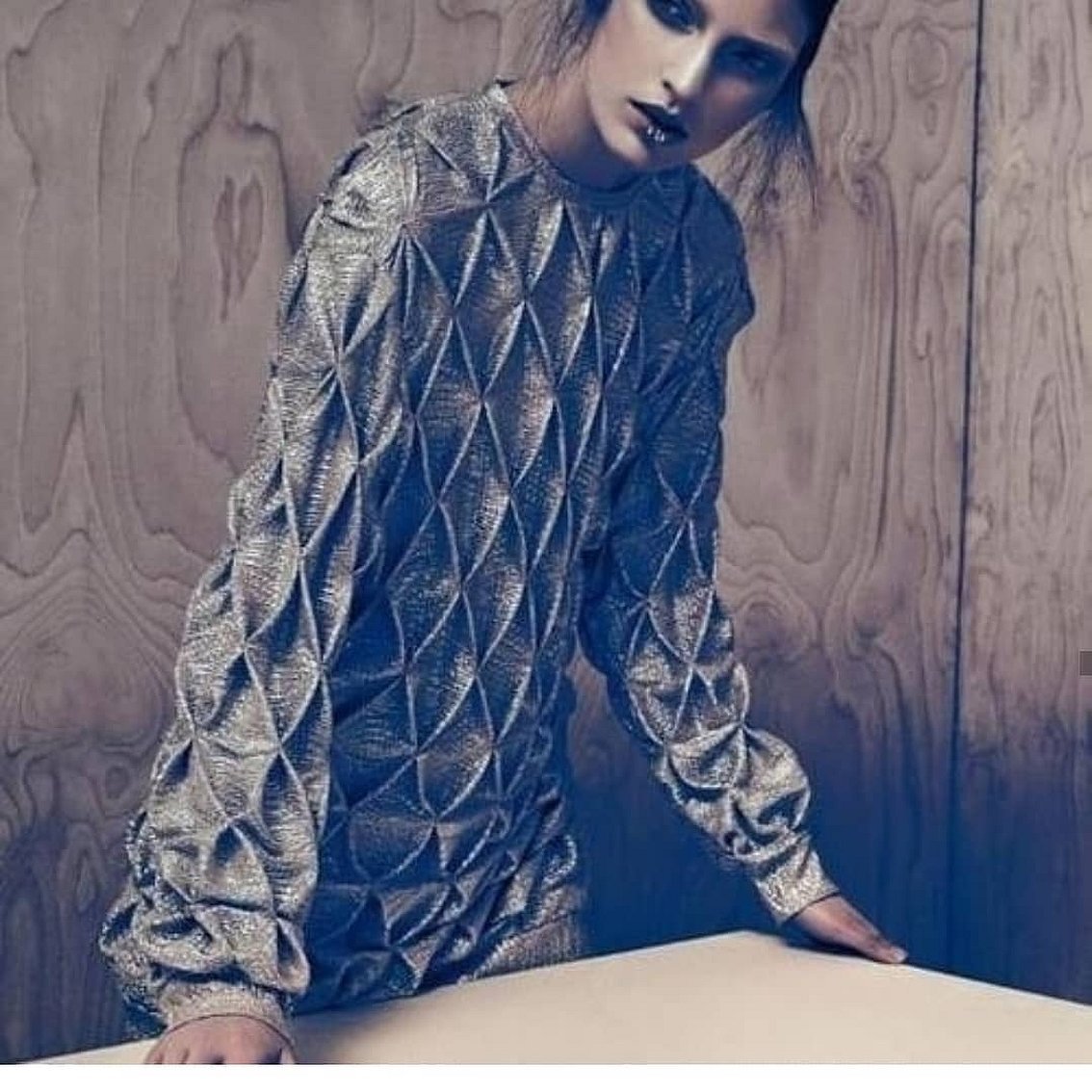
You can use puffs to decorate any type of textile that has decorative functionality.
Types of puffs
There are several types of puffs that have a certain pattern character. The most popular are the following patterns:
- Concentric circles that move from the center to the edges or vice versa. Reminiscent of a "flower" pattern with unfolding petals.
- Linear, when the pattern moves from one edge to the other.
- Multi-row. Seams are formed on the canvas without direction. The most common option is considered to be the "waffle", used to decorate pillowcases.
- Ornamental. The folds form a complex compositional pattern. The simplest example would be a "heart".
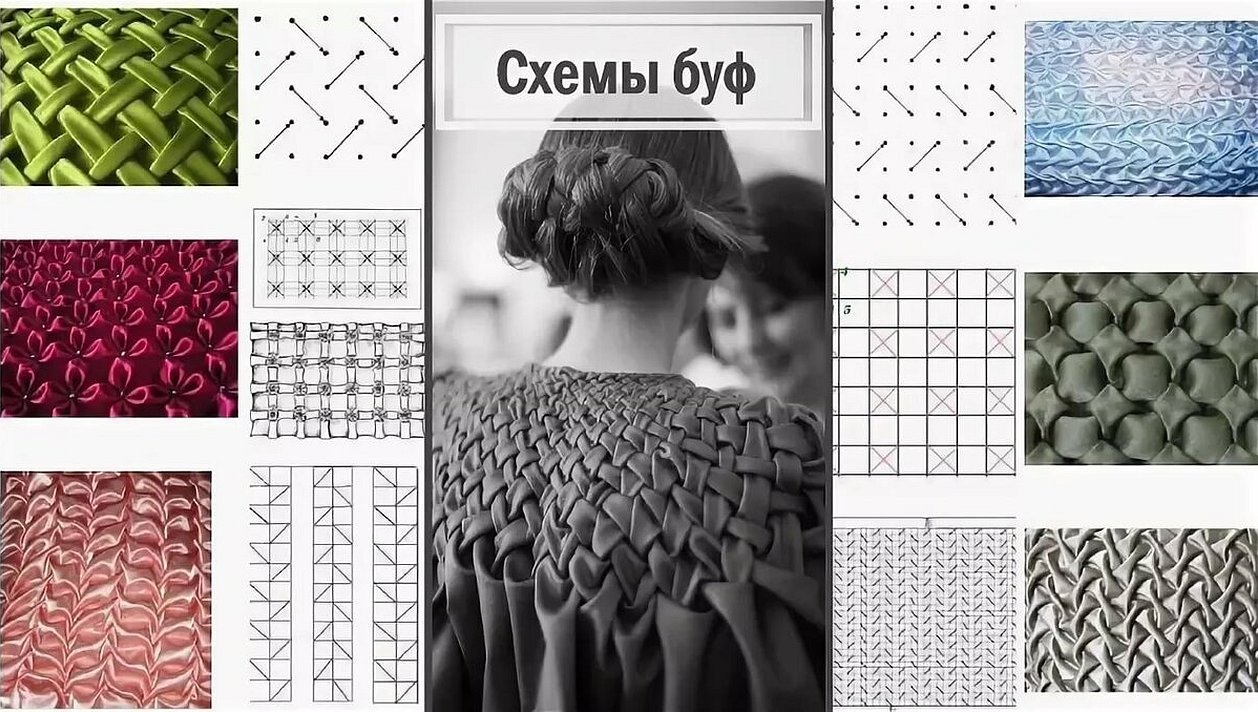
Please note! There can be a lot of examples of specific patterns; if you understand the principle of pattern formation, you can create interesting compositions yourself - without a diagram.
Various variations of folds are considered relevant. For example, polka dots look harmonious on almost all types of products.
Choosing fabric for puffs
To get a neat and embossed pattern, you need to choose the right fabric for the job. This is the most important stage in working on textile finishing. Which options are most preferable:
- Knitwear is ideal for creating the most precise fold shapes.
- Puffs on satin and similar fabrics look rich and elegant.
- On linen and other natural fabrics the pattern looks unclear, but this type of textile is most often decorated using this technique.
- Synthetic fabrics are most amenable to puff stitching.
Important! When choosing, it is worth paying attention to the quality of the fabric - the textile should not be divided into fibers when the base is passed through the needle.
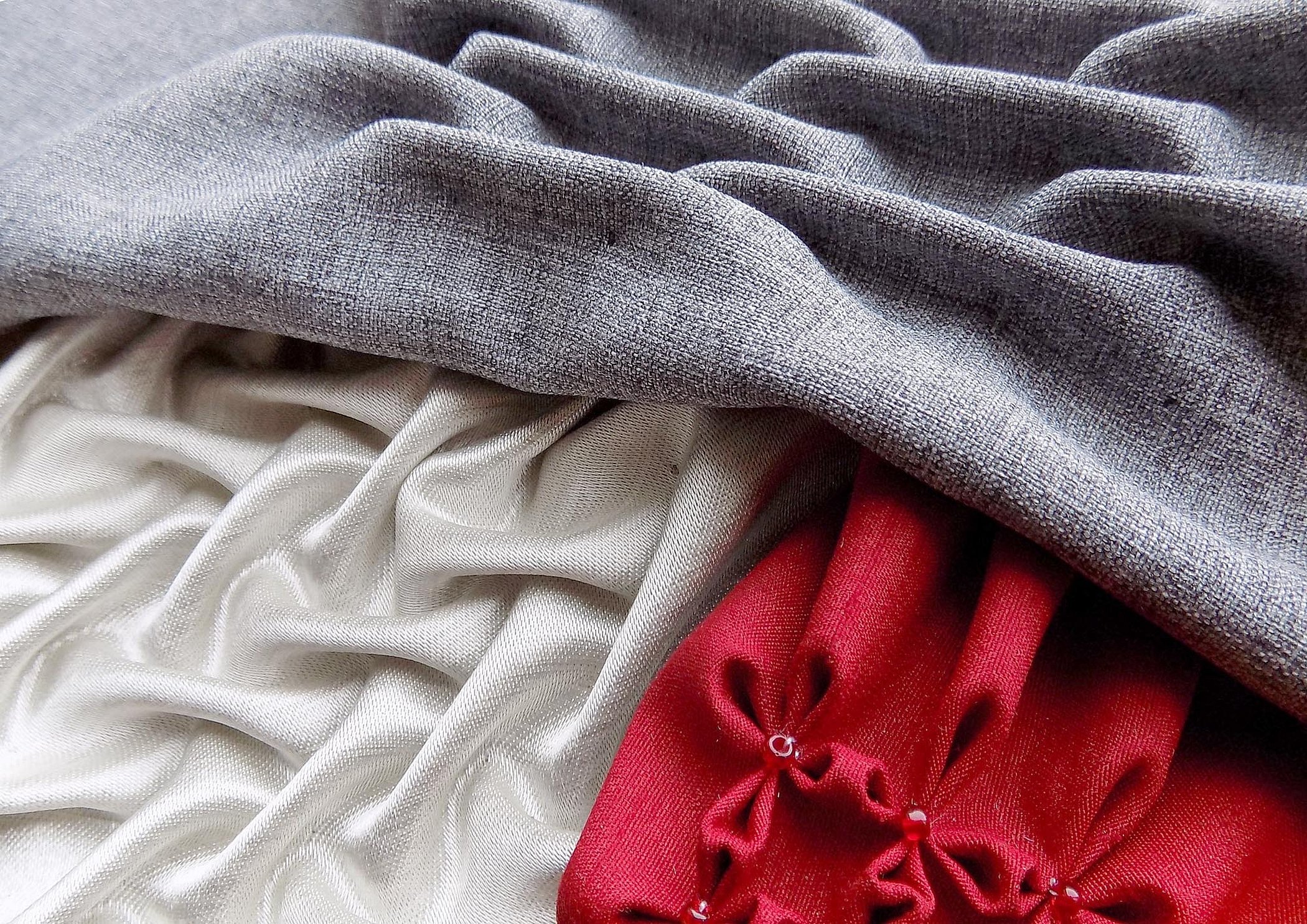
Additional conditions arise regarding the coloring - the material must be monochromatic. There must be no print on the canvas.
Necessary materials and tools
Even the simplest version of a pattern in the "puff" technique requires the appropriate tools and materials. The complexity of the pattern can be completely different. The set in each situation is the same:
- A piece of fabric on which the "fold embroidery" will be done.
- A ruler and a marking tool (pencil or chalk). The tools are needed to recreate the pattern on the canvas.
- A needle and sewing thread, although it is better to use floss.
- Scissors for cutting threads.
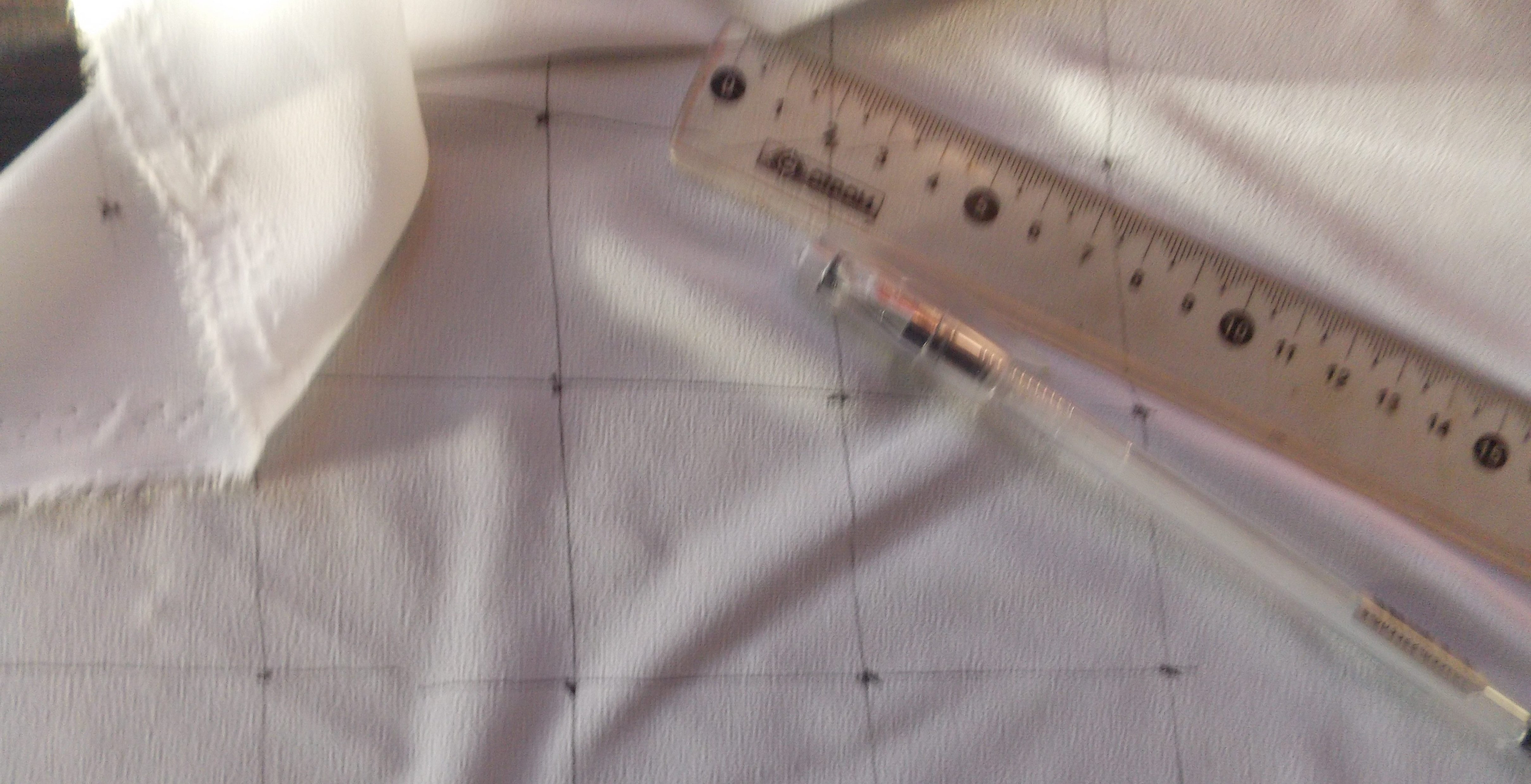
Additional information! It is advisable to use a sewing machine to fix the pattern, but only an experienced craftswoman can do this. Therefore, it is not always necessary to include the device in the main list.

Sometimes needlewomen use hoops as textile fixators. Such a tool can distort the folds, make the pattern asymmetrical or uneven. It is better to prepare a flat surface that will be well lit.
How to calculate the amount of fabric
Before you start working, it is worth thinking through all the stages and preliminarily evaluating the result. Difficulties may arise with the calculation of the fabric, since during the sewing process the fabric is pulled together, forming folds.
Puffs with your own hands for beginners, the schemes and calculation of fabric are as follows:
- You need to decide on the size of the desired product. The parameters must be precise.
- It is advisable to decide on each step of forming folds.
- To get a product of the required size as a result, you need to initially take twice as much textile as you need.
- You need to add an additional 2-3 cm, which can be spent on the seam, processing the cut, and forming the border.
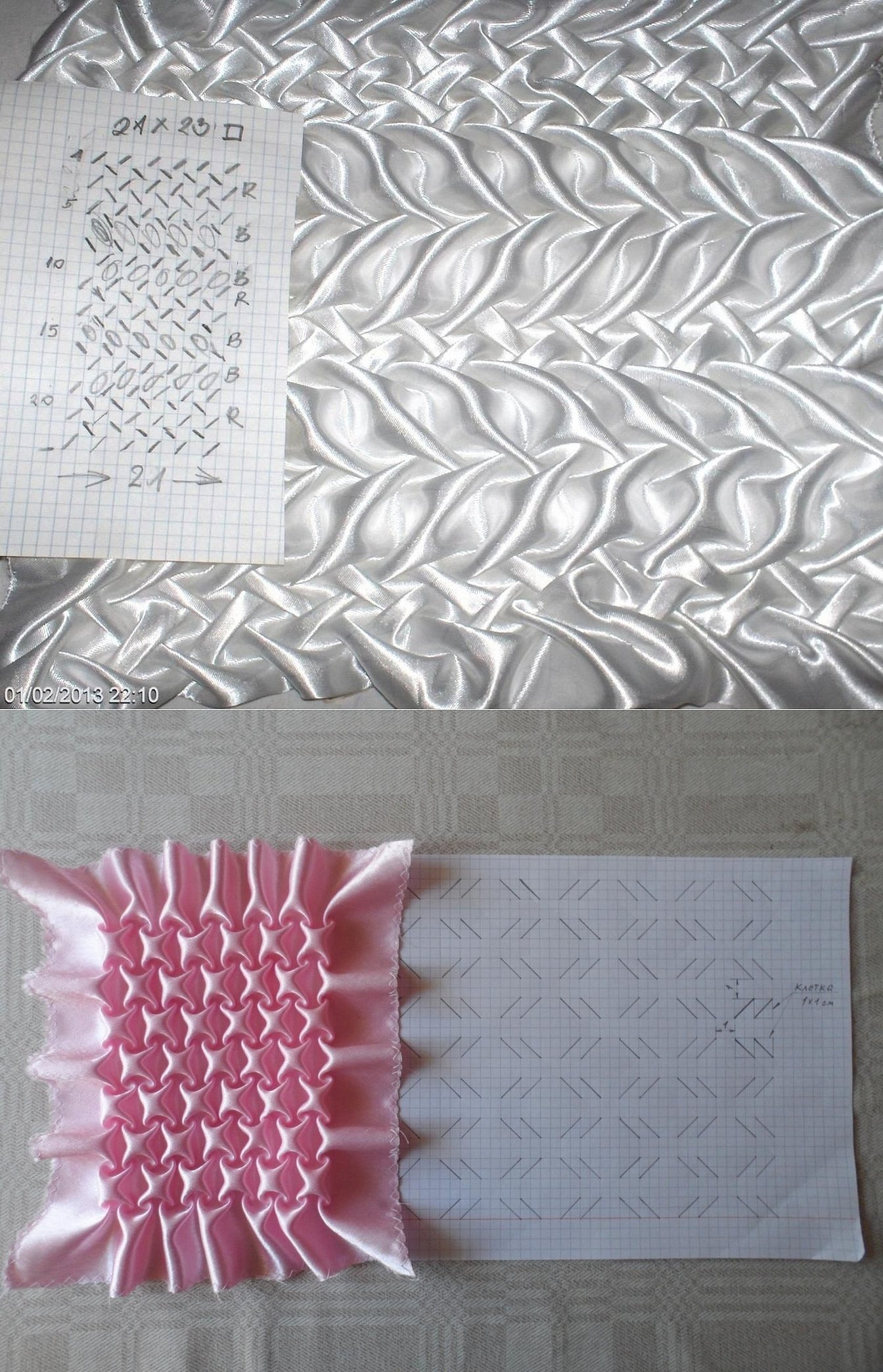
To accurately calculate the required amount of fabric, you need to take a small piece and sew several rows of puffs. Thanks to this, you can determine the degree of deformation and fabric consumption.
Rules for the design of puffs
You can decide how to make neat and correct puffs on fabric in a matter of seconds. You need to know a few secrets of fold design, rules for working with a needle. The main rules are a few nuances:
- The distance between the elements of the pattern should be determined by the size of the base fabric. Usually, only 1.5-2.5 cm between the needle points is enough.
- When transferring the pattern onto the fabric, you need to not only place the needle points, but also indicate the direction of work.
- It is advisable to stretch the thread so that a “stable” but soft fold is obtained.
- When the thread passes through the point, you need to fix it by making several knots at the base.
- The pattern is located in the center of the product and can become a frame or a side strip for decoration.
- You can hide uneven stitches and distract attention from the supporting work by using decorative elements: beads, sequins.
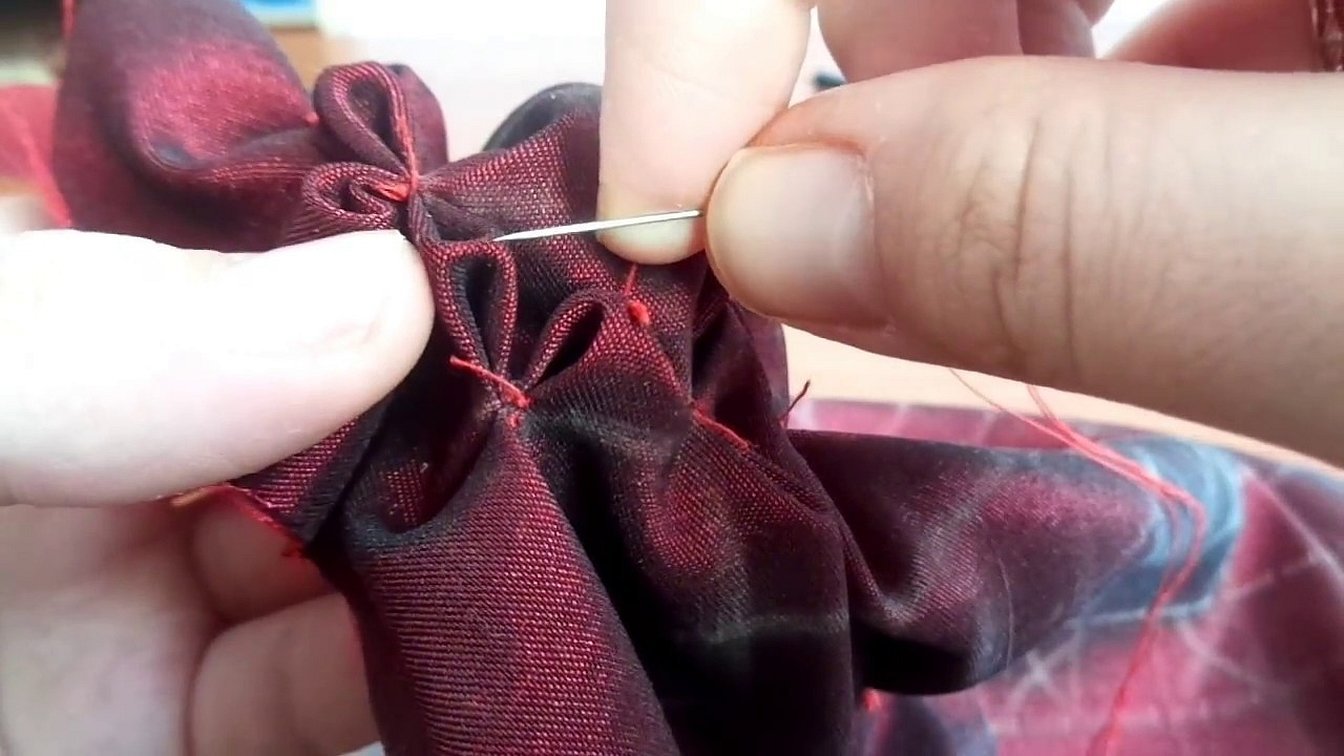
To make puffs, it is enough to know just a few nuances regarding the design of folds. It is advisable to subtly feel the needle, choose the right thread for sewing. To hide not very good work, it is worth using little tricks.
Sewing curtains
To decorate a curtain with puffs, you must first decide on the pattern and its size. If the fabric is thick and rough, the elements should be small. The easier the base is to take, the larger each zigzag becomes.
Description of the formation of puffs on curtains:
- Lay out the curtain, turning the fabric inside out. Iron the fabric to smooth out all the folds.
- Using a ruler and pencil, make detailed markings for the pattern. The result will be a grid resembling a notebook sheet.
- The size of each cell-marking should be 5x5 cm. You can make the figures smaller, then the pattern will look more elegant.
- It is enough to draw 5-6 rows at the top or bottom - it all depends on the decor.

A more detailed algorithm of creation depends on the selected type of "embroidery". Additionally, it may be necessary to sew on a tape to attach the curtains, so it is worth stepping back from the edge about 10 cm.
Pillow puffs
A pillow is an integral part of the interior in many homes. Usually, decorative examples are put on display, which are laid out on a sofa or bed. Standard pillowcases can get boring, so craftswomen try to create something unique and original.
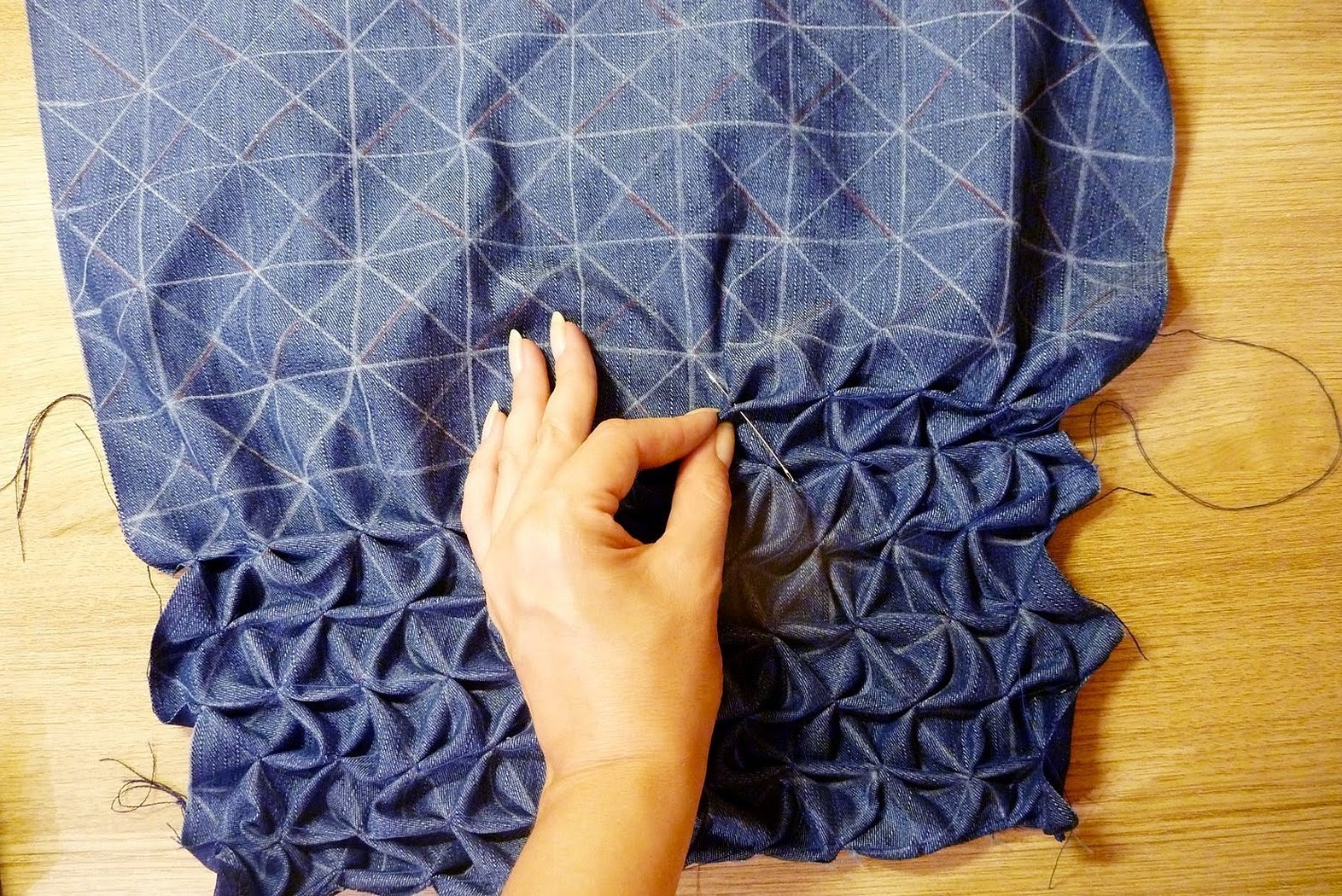
To make a pillowcase non-standard, you can use the "puff" technique. It will not be difficult to work with such a product if you decide on the pattern and prepare the base for work. In order to evenly cover the pillow with a pillowcase, and the pattern itself does not stick out, it is advisable to choose simple patterns. The choice should be made in accordance with the shape of the base and the functional feature of the bedding item.
Step-by-step description of work on the pillow
The most common option for finishing with puffs is making a pillowcase. The procedure is quite painstaking and time-consuming. The stitches must be precise and neat.
How to make puffs on fabric with your own hands, if it is a pillowcase for a decorative pillow. The marking is prepared from the front side. The embroidery is done from the outside of the textile. If we take specifically the "ear" pattern, then the following scheme of work is obtained:
- It is advisable to take satin or synthetic textiles - these types of fabric are easier to wash off dirt.
- Make markings on the front side of the fabric.
- First, mark out a cell with a side of 3 cm.
- Then, using the “herringbone” principle, draw diagonals with a gap of one figure.
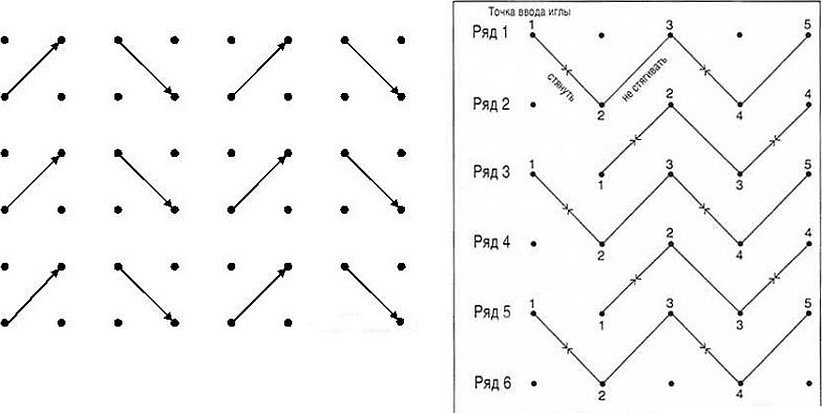
Puffs ear schemes assume the most minimal fabric consumption. The tightening occurs with small folds that visually resemble an ear.
Original methods of finishing fabrics may involve the formation of volumetric types of patterns. To decorate textiles with puffs, you need to use a step-by-step master class and a diagram for work. In each situation, it is worth considering the principle of material consumption, the peculiarity of making a pattern. To use this technique, you should have an intermediate level of needlework.




